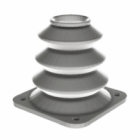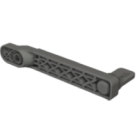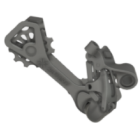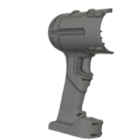Choosing the right 3D printing technology
With so many 3D printing methods available — from FDM and SLA to SLS and DMLS — choosing the right one can feel overwhelming. This FAQ section helps you compare the main technologies based on key factors like print quality, material compatibility, cost, and use case. Whether you’re printing prototypes, mechanical parts, or highly detailed models, understanding the strengths and trade-offs of each method is essential to making the right choice.
There are several, including FDM (Fused Deposition Modeling), SLA (Stereolithography), SLS (Selective Laser Sintering), and DMLS (Direct Metal Laser Sintering). Each has its strengths — for example, FDM is great for cost-effective prototyping, while SLS handles complex geometries without supports. Each uses different materials and processes to meet specific goals like speed, strength, detail, or material compatibility.
In 3D printing, VAT refers to a resin tank used in vat polymerization technologies like SLA (stereolithography) or DLP. The liquid resin is cured layer by layer using light, inside a “vat,” or container. It’s a key component in high-detail resin printing.
The ideal method depends on your priorities: FDM is affordable and easy to use; SLA offers high resolution for visual models; SLS provides durable, functional parts; and metal printing is suited for industrial-grade components. Consider resolution, strength, and budget.
The ideal 3D printing technology depends on what you want to achieve. If you need high detail and smooth surfaces, technologies like SLA (stereolithography) or DLP (digital light processing) are best suited for prototypes and design models. For durable, functional parts, SLS (selective laser sintering) offers strong mechanical properties without the need for support structures. FDM (fused deposition modeling) is a cost-effective option for basic prototypes and larger prints. Your choice should be based on factors like required strength, precision, surface quality, budget, and whether the part will be used for visual, mechanical, or end-use purposes.
FDM is great for cost-effective, functional parts, while SLA excels in fine detail and smooth finishes. Choose based on your need for strength, aesthetics, or print complexity.
SLS uses a laser to fuse powdered nylon, requiring no support structures and producing durable parts. SLA, in contrast, uses light to cure liquid resin and is ideal for high-detail, smooth-finish models. Each suits different applications and industries.
Yes, SLS is ideal for functional prototypes and end-use parts, offering high strength, no need for supports, and excellent geometric freedom.
Yes, SLS is ideal for printing complex assemblies with moving parts, like hinges or gear systems, all in one go. Just make sure there’s a small clearance (usually 0.3–0.5 mm) between parts to allow free movement post-print.
Yes, but it depends on the technology. FDM printers can switch colors with multiple extruders, while some advanced machines (like PolyJet or full-color binder jetting) can print in full color. SLS is typically monochrome but can be dyed after printing.
Explore also
- 3D printing basics explained
- 3D printing materials guide
- Software & tools for 3D printing
- Costs, time & practical considerations
- 3D printing market & capabilities
Related categories













